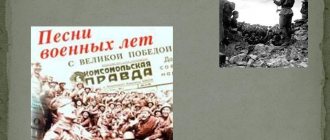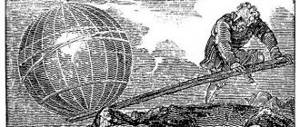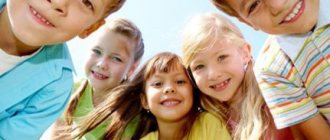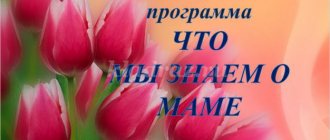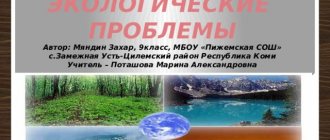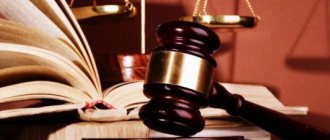Ecology in Mathematics
Application for participation in the All-Russian reserve lesson.
1) Nomination of the Competition “Creativity for the benefit of protected islands”
2) Name of the work (project) “Ecology in mathematics”.
3) Objectives of the work:
- To form in children of all ages an idea of the modern scientific picture of the world and environmental education during classroom hours, lessons on the subject of mathematics, clubs for design and research activities, participation in the volunteer movement, and excursions around their native land.
- To lay the foundations of a caring attitude towards nature through solving problems about endangered species of animals and plants from the Red Book, to expand the “geographical” horizons .
- Show students the role of mathematics in solving the most important problems in society , thereby refuting the prevailing stereotype that mathematics is a body of theoretical knowledge that has nothing to do with real life.
4) Project implementation mechanism:
- Application of information technologies and work with literary sources;
- Organizational and activity-based (conducting training sessions at school, city parks, estates);
- Motivational and need-based (classroom and extracurricular activities of students);
- Reflective-analytical (data collection and positive abilities of students);
- Results of practical activities: creation of posters, postcards “Happy Birthday, Protected Islands!”, videos, design and research work, creative works, information layouts, leaflets with environmental topics, participation in volunteer events, Olympiads and competitions.
5) Results of the work:
The skills and abilities of project activities were formed in the ability to assess the nature of human impact on the environment; increasing interest in studying their small homeland. A functional model of the educational space has been created that promotes the formation of meta-subject competencies of students through the organization of environmental project activities. The relative and qualitative performance of students in the subject of mathematics has increased.
6) Expected results:
- As a result of working on children’s projects, participation in the Olympiad “Museums. Parks. Estates”, in the preparation and conduct of environmental events “Saving the Future. Protected places of Russia" gave students the opportunity to understand the beauty of nature and its protection not only in protected places, but also in big cities.
- The increase in the social activity of students was reflected in the fact that they found like-minded people among the population of the area, involving parents in this work and the public to participate in improving the environmental situation in their places of residence.
- Possible ways to use waste material (project “School of the Future as a Comfortable Working Environment”) to create works of applied art and interior items, ways to save paper (project “The Future of the Earth Depends on You!”);
- Participation in the campaigns “Plant a tree”, “Lilac for VICTORY Day”, “Flower, moth, butterfly”, “Clean yard”, “School winter garden”, “Birds are our friends”, “Good Fair”, etc.;
- Success in implementing projects, expanding your horizons and independence in completing assigned tasks. In the future, focusing on the Career Guidance Program, children have a desire to work as tour guides, volunteers, ecologists, teachers...
- Children who worked in project groups develop teamwork skills and are identified as leaders - the authors of project work. Social communication skills and a culture of dialogue are acquired.
- In the 2017–2018 academic year, participating in the state Program “Where does the Motherland Begin? From the path in the schoolyard”, teams of children are formed to create eco-paths on the territory of the school, kindergartens, in the parks “Druzhba”, “Grachevka” and in the forest park area of the “Timiryazevskaya Academy”.
“...Nature speaks in the language of mathematics: the letters of this language are circles, triangles and other mathematical figures...”
Galileo Galilei (1564 – 1642, Italian scientist)
Mathematics is one of the sciences closely related to ecology. The use of mathematical formulas and processing of statistical data helps ecologists solve problems of restoring ecological balance in nature. Using basic mathematics, we can count and draw diagrams, make precise measurements, make calculations, and confirm observations.
Main part
Every child dreams of improving his hometown, the ecology of the country, the animal world, and therefore school students solve problems related to solving such problems with great interest, as they understand the practical significance of these problems. IN ECO-EDUCATION, interest in the revival of ruined nature, the city OLYMPIAD “MUSEUMS” played a large role. PARKS. ESTATE”, within the framework of which were organized: excursions (photo exhibitions, master classes, travel games “We are responsible for those we have tamed”, “Who feeds us”, “Breeds of domestic animals”, competitions , quizzes, eco-themed holidays); ecological trails – “On the terraces of the Vorobyovy Gory”, “Serebryany Bor”, “Kuzminki-Lublino”, “Friendship”, “Tsaritsyno”; Sokolniki, Kolomenskoye, etc.
CLASS HOURS, teaching material for which was taken from the All-Russian online platforms “All-Russian nature reserve lesson dedicated to the 100th anniversary of the nature reserve system of Russia” and “Green movement of Russia ECA”: “Water of Russia”, “Mobile technologies for ecology”, “Share with by us”, “Black Sea Day”, “Baikal Day”, “Call of the Tiger National Park”, “The Protected World of the City of Sochi”, “How to Live Eco-friendly in a Megalopolis”, etc.;
PROMOTIONS : “Paper boom”, “Give up the batteries!”, “Clean yard”, “Help a tree”, leaflets “Let’s save the planet together”, “Birds are our friends!” and etc.;
VOLUNTEERING : leaflets “Gasoline car - no, electric car - yes!”, posters “Commanded to live!”, flash mob “100 years of the Russian Nature Reserve System”, “Birds are our best friends” (feeders, birdhouses), “Good Fair” (toy exchange , books, CDs), cleanup days in the parks of the Khovrino district.
During the All-Russian lessons, the children solved many problems with environmental content and noticed that those children who were not interested in mathematics lessons were happy to solve environmental problems. And therefore, Ilya Mityunin and Pavel Tikhonov, students of grade 9 B, decided to compile an interactive and paper environmental collections of problems in mathematics “Wildlife places of Russia in problems and examples”, the plot of which is related to the problem of endangered species of animals and plants. This need arose after an analysis of school textbooks (only 5.5% for all textbooks from grades 5 to 7). Ilya and Pavel decided to create tasks that were more modern and more relevant in content. Having set this goal, Pavel and Ilya developed methods for constructing text-based eco-tasks and game-type tasks, using basic methods: research, working with a textbook, reference books, brainstorming, modeling and hypothesis, partially search, project method: collecting digital material, statistical data ; classify material into topics with a variety of subjects; choose mathematical content (problems on movement, percentages, proportions, etc.); put tasks on a local history basis; create an algorithm for solving environmental problems. (When the tasks are compiled, they must be solved, the level of difficulty determined, cards and illustrative material prepared).
The result was problems with examples for all actions, converting one unit of length to another, opening parentheses, bringing similar terms, tasks on movement, parts, percentages, drawing up a schematic drawing when drawing up the conditions of a problem, drawing up an algebraic equation, writing percentages in the form of a decimal fraction , for all operations with decimal and ordinary fractions, etc.
The eco-task book “Natured Places of Russia in Problems and Examples” was tested in our school from grades 5 to 7 and demonstrated at competitions in city venues.
The guys also transformed types of problems and practical problems related to environmental problems in the form of design and research work, and information models were also created to illustrate some projects using mathematical tools.
In the work “The Future of the Earth Depends on You” Gasin Alexander, a student of grade 9 “B”, calculated the amount of paper for organizing the educational process at school, introduced himself and introduced the children to the history and technology of paper production, calculated the number of trees for organizing the educational process at school, in Khovrino, showed the need for careful use of paper and its recycling, found ways to save paper, and repeatedly organized charity events to collect waste paper and plant trees.
Khugaev Georgy and Farziev Muhammed , students of grade 8 “A” in the work “A car as a safe means of transportation” raised the question of the correct use of fuel, and which fuel is less harmful to the environment. It turns out that most cars in the world are equipped with an internal combustion system, and every day a car emits more than 3 kg of harmful substances into the atmosphere. Therefore, in large cities there is a lot of air pollution. The guys conducted an experiment in which they compared a clean white sock and a sock that had been under car exhaust for some time. From the experience with socks, Georgy and Mohammed showed that a car releases many harmful substances into the atmosphere, disrupting the ecology of the Earth. We made some calculations and determined how much money the average Russian citizen spends on fuel for his car. The data was entered into a table, mathematical calculations were made, proportions were drawn up and we saw that the most economical type of fuel is electricity. In their work, the guys analyzed and identified which type of fuel from the liquid and gaseous sections is the most profitable and least harmful to the environment.
Galitsyna Valeria and Fisenko Kristina, students of 9th “B” grade in the project “School of the Future as a Comfortable Working Environment” using the “matrix of expert assessments of housing comfort” (allows us to unify the system of comfort qualities), using formulas for the volumes and surface areas of stereometric figures, calculated the coefficient comfort of housing according to the formula: k = 36p V²/S³, where V is the volume, S is the surface area, thereby proving that everything around is geometry... It turns out that the most comfortable house is a house in the shape of a ball. And indeed: we have never seen so clearly such forms as a sphere, a prism, a cone, etc., executed so clearly, with such care and so confidently, as in nature.
Rogozhkin Artem with classmates Bekmurzaeva Karina and Fanshtein Anastasia (9th “B” grade) in the project “Office as a comfortable working environment” used methods : questioning, measurement, analysis and abstracting of literature, calculation using formulas, comparison, modeling. We carried out geometric measurements of windows (glasses), the floor of the office, calculated the total area ( S = a · c) of the windows, the floor of the classroom, ventilation openings (transoms, vents), and found the volume ( V = a · b · c ) of the room. We calculated the light and artificial coefficients using the formulas: Ks = p/o : p/p, Kio = M · N : p/p , where Ks is the light coefficient, p/o is the area of the room windows, p is the floor area, Kio is the coefficient artificial lighting, M – lamp power in watts, N – number of lamps, p/n – floor area. We calculated the aeration (ventilation) coefficient using the formula: Ka = p/v : p/p , where Ka is the aeration coefficient, p/v is the area of all ventilation holes, p/p is the floor area. We analyzed the results, compared them with SanPiN standards, and concluded that the comfort level of the mathematics classroom for studying such an important and exact science as mathematics is good. The health-preserving environment in the classroom complies with SanPin standards and an environmental “Health” passport has been issued for the mathematics classroom to maintain a health-preserving environment.
Many guys used mathematical prototyping when creating their projects . To do this, the following mathematical knowledge was used:
determining the scale and proportion of objects; sketching; design in 3D graphics and in the 3D-maya program; compiling fragments of developments based on simple geometric bodies; studying the principles of constructing layouts of buildings and transport structures from waste material; connection of transitions, outputs; collection of all parts of structures; equipping buildings with LEDs and electrical equipment; carrying out experiments if necessary; color scheme.
We studied such concepts as “Drawing up architectural models”, “Types of architectural models”, “Main stages of making architectural models”.
For example, in the project “Fountain at the Bolshoi Theater,” students of the 6th “G” class Ksenia Petunina and Ekaterina Tyulpakova set themselves the goal of creating a model of the project and telling their classmates and school children what the main goal was when creating the project: to increase the cultural level, expand horizons, get acquainted with the landmark of your city of Moscow, understand the significance of this landmark that it has in our time, develop skills in searching, finding and processing new information, fine motor skills, improve design skills, find out the effect of fountains on human health (fountains have a positive effect on vision, hearing, touch and smell of a person and create a favorable sensory environment in the city, close to the indicators of the natural sensory environment, and thus fountains contribute to the psychophysical health of citizens). During the work, the girls conducted experimental studies of the dependence of the height of the fountain column on the diameter of the tube (10 experiments) and the height of the fountain column on the height of the vessel with water with Ksenia’s mother, Irina Sergeevna, Katya’s uncle, Sergei Vasilyevich, got acquainted with the basic principles of the operation of fountains, and learned that the most important thing in a fountain.
Kalinin Alexander, a student of grade 8 “B” in the project “MCC as a way to quickly travel around Moscow, using the example of the Koptevo station” showed how the MCC improves the transport and environmental situation in a separate area using the example of the Koptevo station. I completed all the layouts of the sketches with the help of my grandmother Natalya Gennadievna and the components of the layout on a scale of 1: 50. I calculated the dimensions of the entrance to the platform: length: 1050 cm: 50 = 21 cm; width: 225 cm: 50 = 4.5 cm; height: 250 cm: 50 = 5 cm and drew the electrical diagram of the layout together with dad Dmitry Sergeevich.
Gasin Alexander , student of grade 9 “B” in the project “Andreevsky Bridge . History”, using the example of the Andreevsky Bridge, showed the historical, and most importantly, environmental importance of the reconstruction and launch of passenger traffic on the Small Ring of the Moscow Railway (MK MRR). I found out how much the environmental and transport situation in the capital has changed after the MCC was put into operation. I set myself the following tasks: to prepare everything necessary and to create a model-reconstruction of the old St. Andrew’s Bridge in nearby villages (early 20th century). Based on the work, conduct themed classes at school about the history of Moscow, namely the history of the MCC using the example of St. Andrew's Bridge.
Calculated the dimensions of the layout elements: Scale: 1 cm 20 meters;
Bridge: 278 m = 13.9 cm; River: 120 m = 6 cm; Bridge arch: 135 m = 6.25 cm;
Embankment: 400 m = 20 cm and drew an electrical diagram of the layout.
When creating the model “Green lifestyle - the path to a clean future”, students of grade 9 “B” Mityunin Ilya, Fisenko Kristina, Konovalova Maria set a goal: during class hours and outside of school hours, students in grades 1-7 to form a responsible attitude towards the condition environment and your health, teach how to apply eco-friendly habits in everyday life, make your own contribution to solving environmental problems, understand the importance of any, even the smallest action, find ways to live comfortably without harming the environment; reveal concepts such as environmental pollution, eco-footprint, eco-friendly lifestyle. Conduct practical work on mathematics “My Ecological Footprint”. (The questionnaire allows you to find out how many planets humanity would need if all people lived the way you live. In order to calculate your ecological footprint, you need to select the statement that corresponds to your lifestyle and add/subtract the number of points indicated on the right. Summarizing points, you will receive the value of your ecological footprint. Sections of the questionnaire: living conditions, energy use, transport use, purchase and consumption of food, water and paper consumption, waste). The results were presented in the form of a scale.
The guys from the 6th grade Tyulyu Georgy, Russak Semyon and Goglov Maxim a master class “Space and Ecology” for their classmates , where they told how they monitor the weather from space, look for minerals, and warn about the possibility of environmental disasters. We completed the design of a mock-up of the Buran spacecraft and the Energia launch vehicle. The guys made models of spacecraft from paper, wood and metal construction kits. The goal and objectives of the project were: to conduct a master class on space and environmental protection;
introduce the history of the flight of the Buran spacecraft;
put forward your own version for civil aviation on the safety of passenger airliners; using materials and tools in the workshop, make ship models, carve rockets from various materials; give an eco-assessment to your work (the base and body of the product are made of environmentally friendly material plywood, timber, paper; used batteries can cause environmental harm, so they must be disposed of separately). George’s grandfather, Viktor Semenovich, helped the guys in the workshop.
Conclusion
Working on the creation of eco-lessons, through design and research work we learned how the language of mathematics helps to study and model environmental objects, processes and phenomena, and determined the scale of our impact on the environment by completing the practical work “Ecological Footprint”. During testing of the problem book, the school children were shown in class the role of mathematics in solving the most important problems in society, in particular, the problem of instilling respect for nature and preserving endangered species of plants and animals. Classroom and extracurricular work in mathematics made it possible to refute the prevailing stereotype that mathematics is a body of theoretical knowledge that has nothing to do with the real life of a person. It is not for nothing that mathematics is called the queen of all sciences, because it is used in many disciplines, even where it seemed difficult to imagine its application.
Forecast for the future
In the future, students are going to continue the collection with problems on the basic rules of mathematics. At the same time, inserting a corresponding photo or picture along the task. Post the collection on the MES network so that the problems are available to all school and city students as preparatory material for lessons for our gymnasium teachers and others with the goal of instilling in students a caring attitude towards nature through solving problems about endangered species of animals and plants. Create a presentation about the history of the creation of the Red Book for younger children – kindergartens in our complex. Make recommendations for the “Active Citizen” portal: repair and put into operation non-working fountains; build new fountains and splashing pools in areas far from the city. Continue to create design and research works of eco-mathematical content - so that all the children learn to solve problems on the basic rules, becoming familiar with the Protected Islands of Russia as they solve problems. Conduct events, excursions, participate in the volunteer movement to preserve the environment, attracting parents and city residents.
OUR AWARDS
By participating in competitions at various levels, the children became winners and prize-winners:
I) Competition "Technopark". Moscow Department of Education.
1st place in the section “Numbers. Figures. Algori (Mityunin Ilya, Tikhonov Pavel 8B class) 03/03/2017;
1st place in the section “Numbers. Figures. Algori (Rogozhkin Artem, Bekmurzaeva Karina, Fanshtein Anastasia 7 B, C grades) 03/23/2016;
2nd place in the “Numbers” section. Figures. Algori (Galitsyna Valeria, Fisenko Kristina 7th grade B) 03/23/2016;
II) 23rd scientific and practical conference of ICADO schoolchildren.
MADI (cooperation with universities) 03/29/2017
2nd place in the “Ecology” section with the work “Wildlife places of Russia in problems and examples” (Ilya Mityunin, Pavel Tikhonov, 8B grade),
3rd place in the “Ecology” section with the work “Mathematics classroom as a comfortable working environment” (Rogozhkin Artem, Bekmurzaeva Karina, Fanshtein Anastasia, 8 B, C grades);
3rd place in the “Cars” section with the work “A car as a means of transportation that is safe for health” (Khugaev Georgy, Farziev Muhammed 7 A class);
III) Competition “Education. The science. Production". Moscow Department of Education . 15.02.2017+6.04.2017+24.01.2018+31.01.2018
2nd place in the section “Innovations in Education” with the work “Reserved Places of Russia in Problems and Examples” (Mityunin Ilya, Tikhonov Pavel 8V),
2nd place in the section “Architecture without Borders” with the work “School of the Future as a Comfortable Working Environment” (Valeria Galitsyna, Christina Fisenko, 8th grade);
winner in the section “Innovations in Education” with the work “A car as a means of transportation that is safe for health” (Khugaev Georgy, Farziev Muhammed 8th grade);
winner in the “Industrial Moscow” section with the work “MCC as a way to quickly travel around Moscow, using the example of Koptevo station” (Alexander Kalinin, 8th B grade);
winner in the “Moscow Industrial” section with the work “St. Andrew’s Bridge. History" (Gasin Alexander 9th grade);
winner in the section “Man-Made Moscow” with the work “Fountain at the Bolshoi Theater” (Ksenia Petunina, Ekaterina Tyulpakova, 6th grade);
winner in the section “Man-Made Moscow” with the work “Green Lifestyle” (Kristina Fisenko, Maria Konovalova, Ilya Mityunin 9th grade).
IV ) School of New Technologies. Moscow Department of Education. City scientific and practical conference SOPOT “We create. Let's discuss. We design. Let's summarize. We create." 03/16/2017; 03/22/2018
Laureates in the section “Architecture without Borders” with the work “School of the Future as a Comfortable Working Environment” (Galitsyna Valeria, Fisenko Kristina 8 V);
Winners in the sections “Evolution of Transport and Transport Technologies” and “Health-Saving Technologies” with the works “MCC as a way to quickly travel around Moscow”, “The future of the Earth depends on you”, “Fountain at the Bolshoi Theater”, “Andreevsky Bridge. History", "Green lifestyle - the path to a clean future" Kalinin Alexander 8 B, Gasin Alexander 9V, Petunina Ksenia 6 G, Tyulpakova Ekaterina 6 G, Fisenko Kristina 9 V, Konovalova Maria 9 V.
V) School of New Technologies. Scientific and practical conference “On the path to knowledge”. 04/13/2017
1st place in the “Ecology” section with the work “Wildlife places of Russia in tasks and examples” (Mityunin Ilya, Tikhonov Pavel 8 V),
3rd place in the section “Architecture without Borders” with the work “School of the Future as a Comfortable Working Environment” (Galitsyna Valeria, Fisenko Kristina 8 V),
3rd place in the “Ecology” section with the work “A car as a means of transportation that is safe for health” (Khugaev Georgy, Farziev Muhammed 7 A)
VI) School of New Technologies. Conference “Territory of Knowledge” 04/18/2017; 03/29/2018
1st place in the “Mathematics” section with the work “The Protected Places of Russia in Problems and Examples” (Ilya Mityunin, Pavel Tikhonov 8 V),
1st place in the “Economy” section with the work “A car as a means of transportation that is safe for health” (George Khugaev, Muhammed Farziev 8 A)
4 - winners in the categories (Galitsyna Valeria, Fisenko Kristina 8 V), (Gasin Alexander 8 V), (Khugaev Georgy, Farziev Muhammed 7 A), “For the practical achievements of the author”, “For the relevance of the research”, “For taking into account interdisciplinary connections” ;
VII) Fair of Ideas - MFLA . (Cooperation with Universities). 9.03.2017+30.03.2017
1st place in the “Ecology” section with the work “A car as a means of transportation that is safe for health” (Khugaev Georgy, Farziev Muhammed 7 A),
2nd place in the “Mathematics” section with the work “The Protected Places of Russia in Problems and Examples” (Ilya Mityunin, Pavel Tikhonov 8 V),
3rd place in the “Mathematics” section with the work “The School of the Future as a Comfortable Working Environment” (Valeria Galitsyna, Kristina Fisenko 8B),
3rd place in the “Ecology” section with the work “The Future of the Earth Depends on You!” (Gasin Alexander 8 c),
3rd place in the “Ecology” section with the work “Mathematics classroom as a comfortable working environment” (Rogozhkin Artem, Bekmurzaeva Karina, Fanshtein Anastasia, 8 B, C grades);
VIII) Competition “I am a citizen of Russia.” Moscow Department of Education. GBOU DO. Center for Creative Development and Humanitarian Education . 8.04.2017; 15.04.2018
nomination “Interdisciplinary Integration” with the work “Sacred Places of Russia in Problems and Examples” (Mityunin Ilya, Tikhonov Pavel 8 V)
“Ecology in mathematics” (Mityunin Ilya 9V, Tikhonov Pavel 9V, Rogozhkin Artem 9V, Galitsyna Valeria 9V, Fisenko Kristina 9V, Khugaev Georgy 8A, Farziev Muhammed 8 A, Kalinin Alexander 8 B, Smirnov Anatoly 8B, Gasin Alexander 9V, Petunina Ksenia 6 G, Tyulpakova Ekaterina 6 G, Konovalova Maria 9 V, Tyulyu Georgy 6 G, Russak Semyon 6 G, Goglov Maxim 6 G;
IX ) City Olympiad “Museums. Parks. Estates." Moscow Department of Education. 2015-2018
1st place for the entire class of students from grades 5 to 8 2015-2018;
X ) Distribution of leaflets “Electric car - a car that preserves health” March-April 2016-2017;
XI ) Planting trees, lilac bushes, flowers, pruning trees in the fall, holding events “Birds are our friends”, “Goodness Fair” Autumn-spring 2015-2018 (kindergartens, schools, parks “Druzhba”, “Grachevka”);
XII ) Participation in the flash mob “Protected Islands of Russia” - creation of a video and postcards with congratulations on the 100th anniversary of the Russian Nature Reserve System. January-May 2017;
XIII ) Subbotniks for cleaning school and preschool areas. Spring, autumn 2014-2018;
XIV ) Collection of waste paper - spring, autumn - annually 2014-2018;
XV ) Participants of the All-Russian Environmental Festival of Children and Youth “Live for the Earth!” (Ministry of Education and Science of the Russian Federation together with the limited liability company “Space of Innovation”) 23.06. 2018;
XVI ) Participants of the Idea Fair “Projects of the Future” of the Moscow Department of Education and Moscow State Pedagogical University 2020.
XVII ) Moscow city competition of research and design works. Russian Economic University named after G.V. Plekhanov
2nd place in the section “Features of management in the public and commercial sectors” “Wildlife places of Russia in tasks and examples” (Tikhonov Pavel, Mityunin Ilya), 03/24/2018.
XVIII ) Participants of the Festival “Tree of Life”-2018;
XIX ) Laureates of the All-Russian competition “All-Russian reserved lesson” - 2017 Mityunin Ilya 9V, Tikhonov Pavel 9V with the work “Wildlife places of Russia in problems and examples”;
XX ) Prize-winners of the open city competition of design and research works “Through hardships to the stars” 04/15/2018
Tyulyu Georgy, Russak Semyon, Goglov Maxim with the work “Project of a model of the Buran spacecraft and the Energia launch vehicle” 6 G.
Mathematics in the service of ecology
The solution to pressing environmental problems is associated with increasing the status of environmental education in mathematics teaching. Currently, tasks aimed at developing a certain level of environmental culture in students continue to be relevant.
Every person is concerned about the state of the environment, since the fate of humanity depends on it. Of course, each of us is not able to avert the threat to human civilization, but we cannot help but see the impending disaster and not think about it. After all, an environmental disaster is not a speculative picture of some distant future, but the consequences of what exists at the present moment and in the midst of which we live [2].
Mathematics is one of the subjects that is not yet sufficiently connected with ecology, and yet these sciences are closely intertwined. Unfortunately, this connection is not observed in modern textbooks, which requires mathematics teachers to solve problems of environmental content.
An analysis of the environmental problems that have developed in the Samara region suggests that environmental pollution remains at a high level. This is primarily facilitated by enterprises in the petrochemical, energy, and engineering industries, which discharge wastewater directly into the rivers flowing in this territory [1].
However, the uncontrolled discharge of wastewater from industrial enterprises significantly affects the quality of water in Samara. This fact is confirmed by regular studies of water samples, which contain a large number of harmful elements: heavy metal compounds, organochlorine pesticides, phenols.
We, students of the Samara region, should not remain indifferent to this problem and try to focus on solving it with the help of environmental problems.
Let's consider some environmental problems.
Problem No. 1. How much river water do we lose annually, if it is known that per year we discharge 28 km3 of untreated wastewater into reservoirs, and 1 km3 of this water makes 60 km3 of water unfit for consumption?
Answer. We are losing 1680 km3.
Task No. 2 . How many times has the area of spawning grounds for spawning fish decreased due to the construction of a hydroelectric power station on the Volga, if it is known that they were 3600 hectares, and now only 430 hectares remain?
Answer. The spawning grounds of spawning fish have decreased by 8 times.
Task No. 3 . It is known that 1 ton of spilled oil forms a spot on the water surface with an area of about 6 km2. What area of the water area will be covered by an oil film in the event of an accident on a tanker with a displacement of 5000 g?
Answer. The oil film will cover 30000000000 m2.
Task No. 4 . The main consumer of water is agriculture. It consumes 70% of all water used by humans. To grow 1 ton of wheat, 1500 tons of water are required. Calculate the required amount of water for growing wheat on a field with an area of 25 hectares and a wheat yield of 22 quintals per hectare.
Answer: 82,500 tons.
Task No. 5 . The area of the Samara region is 53.6 thousand km2. Find the land area, water area and forest area of the region if water makes up about 3% of the total territory, and forests occupy 7% of the land area.
Answer: land -52 thousand km2, water -1.6 thousand km2, forests - 3.6 thousand km2.
Task No. 6. The contractors daily exceeded the norm for cleaning Komsomolskoye Lake by 40 cubic meters of liquid, so they completed the 6-day norm in 4 days. How many cubic meters of liquid did the contractors clean per day? In how many days can the entire lake be cleaned if the volume of water in the lake is 36 km3?
Answer: The contractors completed 80 m3 of liquid in a day, 3 days.
Task No. 7. In total, 8237 tons of pollutants were discharged into water bodies. How much nitrates were discharged if the release of sulfates amounted to 112 tons. less than chlorides, and nitrates 2910 more than sulfate? Determine how much the emission of pollutants into water bodies has increased if last year it amounted to 5201 tons.
Answer: 5469 t, 3036 t.
Problem No. 8. Through three pipes, an oil company discharged oil sludge into the Vetlyanskoye reservoir. It will take the same amount of time to discharge all the oil sludge into the lake through the third pipe as if discharged through the first and second at the same time. How long will it take to discharge oil sludge through each pipe if the first one discharges water 2 hours faster than the third one and 6 hours slower than the second one? How many living creatures die per year due to the discharge of oil waste, if on average 12 tons of fish die per month?
Answer: 144 tons.
Task No. 9. On average, each person consumes 1.7 liters of water per day, with a physiological need of 2–3 liters. Calculate how much water is consumed on average by all students in a class or school per day, per year?
Answer: 39.1 l, 14271.5 l, 2040 l, 744600 l.
Task No. 10. Industrial and domestic wastewater from five large settlements flows into the Samarka River and its tributaries. In 2017, over 90 million m3 of wastewater was discharged from these points. Of these, 47 million m3 are polluted. What percentage of wastewater was contaminated?
Answer: 52 %
Problem No. 11. Calculate how much water a city with a population of 1 million residents needs to dilute wastewater throughout the year, if it is known that the city’s daily need for clean water is 0.5 million m3. Before discharging into a reservoir, wastewater must be diluted with 20 times the volume of clean water.
Answer: 3650 million
Problem No. 12. Washing a pile of dirty dishes under a strong stream requires an average of over 100 liters of water, and in a sink with a closed drain plug no more than 20 liters. How much water can you save in 1 day if you wash dishes in a closed sink after breakfast, lunch, and dinner.
Answer: 240 liters
It is difficult to overestimate the role of mathematics in learning and the development of thinking and cognitive activity. Solving problems with environmental content affects the quality of students’ mathematical knowledge, contributes to their general mental development, to some extent, the development of research skills, and calls for solving environmental problems in our region and the whole country as a whole.
Literature:
- Akimova T. A., Kuzmin A. P., Khaskin V. V. Ecology // M: UNITI, 2001. -343 p.
- Novikov Yu. V. Ecology, environment and people // M: ORAIR-Press, 2002.-560 p.
